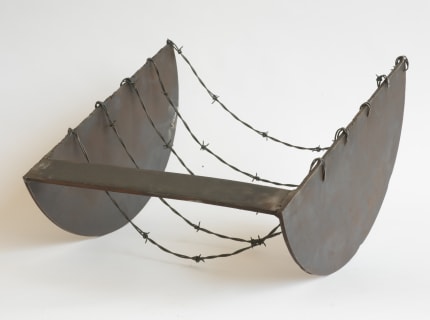In recent years, curatorial efforts to recuperate the stories and careers of Black artists who practiced during the 1960s and ’70s have indicated an undeniable expansion of the American art canon—a development that recognizes the as-yet-untapped legacies of Black expression that have, consciously or not, evaded these same historicizing modes. Consider the 2021 restaging of the “Sapphire Show,” among the earliest West Coast exhibitions dedicated to Black American women artists, at New York’s Ortuzar Projects, or the recent “Just Above Midtown” presentation at the Museum of Modern Art, honoring Linda Goode Bryant and the dynamic roster of artists, including David Hammons and Senga Nengudi, who showed at the eponymous gallery. These outings were two newer examples of how throwing institutional muscle behind archival research can yield fantastic results.
“Revisiting 5+1” joined the list of successful retrospective efforts that have substantiated how the knotty debates concerning political representation, activism, and aesthetics among Black artists remain ever complex and salient. The show took as its starting point “5+1,” the 1969 exhibition of Black abstraction at Stony Brook University that featured art by Melvin Edwards, Daniel LaRue Johnson, Al Loving, Jack Whitten, and William T. Williams and was organized by British Guyanese painter Frank Bowling, the “+1” to the quintet. The curators of this iteration—Stony Brook Ph.D. candidates Elise Armani, Amy Kahng, and Gabriella Shypula, with consultation from the university’s distinguished professor of art Howardena Pindell and advisement from Karen Levitov and Katy Siegel—cannily moved beyond a mimetic redux of the first presentation. The decision was partly practical: Many of the original works were lost to history or had been econfigured by the artists themselves.
...

